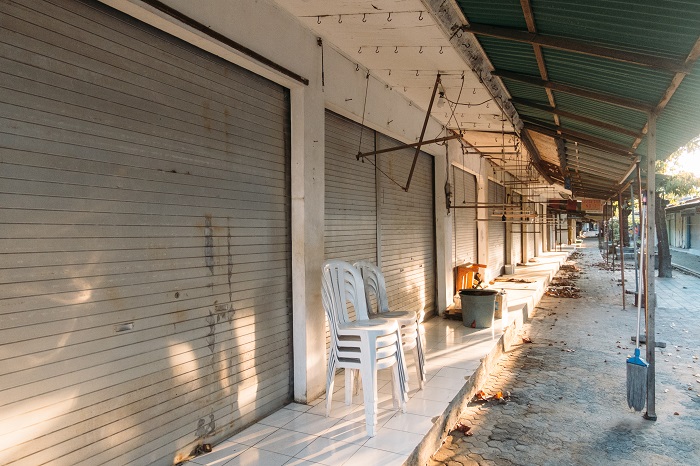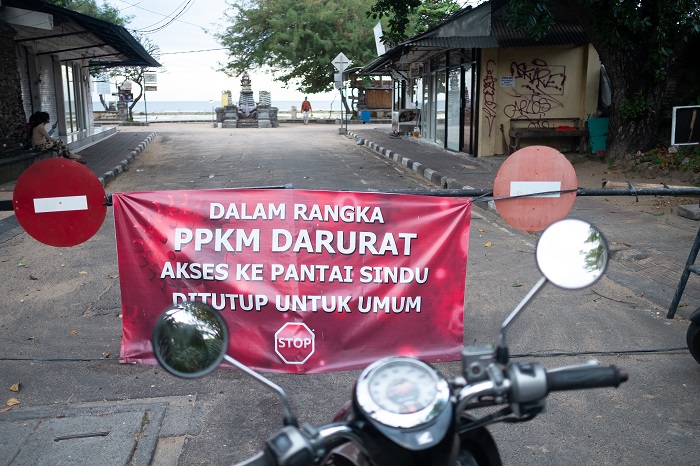What impact has the pandemic had on the lives of Bali's people, and what possible changes has it left in its wake?
Jemma Purdey
In February 2022, Bali’s international border reopened after almost two years. Long-awaited and warmly welcomed by most on the island whose livelihoods are so deeply connected to the dominant tourism industry, there is also a level of concern and trepidation. The sudden and prolonged halt to an ever-increasing flow of international visitors into Bali, whilst devastating for tourism and the economy at large, has forced many to reflect upon and rethink the over-dependency on this sector and its social and environmental impacts.
Compared to its neighbouring island Java, Bali has to date avoided a large-scale COVID-19 health crisis due to its high vaccination rates and adherence to social-distancing and other health protections. However, the pandemic induced international border closures and restrictions on mobility meant that Bali’s economy was most likely the hit hardest in all of Indonesia. The raw numbers are stark and extraordinary. In 2019 Bali welcomed over six million international visitors, in 2020 this number was just over one million, and in 2021 only 45 international visitors arrived directly in to Bali. It is estimated that prior to the pandemic around 70 per cent of the economy was linked to tourism and over half of all jobs.
As Anton Muhajir details in his article in this edition, when compared to past crises, including the 2002 Bali Bombings and 2017 Mt Agung eruption, the economic and social impact of the pandemic has been unprecedented - a prolonged period of being closed off from a global market upon which Bali had become so intrinsically, if not totally, connected and dependent.

All of our contributors to this edition lived in Bali during the pandemic. We invited them to reflect on their experiences, on how they, their neighbours and organisations have faced the challenges brought by the economic and health crisis; how communities have remained connected and individuals have found a way through.
Nicodemus Freddy Hadiyanto puts faces to the numbers, sharing stories from his neighbours and friends who, like so many, found themselves out of work and with no idea when the tourists would return. Whilst some are looking forward to Bali’s reopening and returning to their pre-pandemic employment, many others, through necessity, grit and ingenuity have found new paths and new livelihoods away from tourism and do not expect to go back.
In their essays Paul Walters and Suzy Hutomo reveal how the pandemic has exposed Bali’s complex predicament – long known, but until this crisis perhaps conveniently overlooked – whereby the very beauty and relaxed living for which Bali is famous is under constant threat due to the ever-larger numbers of tourists who come to experience it. As the wonderful photos from Syamsul Sofian accompanying Hutomo’s essay show us, in their absence nature has reclaimed parts of the island and wildlife has returned.
Likewise, Sue Useem’s article on Bali’s much-loved dogs reminds us of the close relationship between human and animal in Balinese culture. Pandemic restrictions created challenges for organisations caring for these dogs, but re-connecting with their local communities during this time has given rise to youth-led grassroots animal welfare efforts that offer much hope for the dogs' future wellbeing.

Fransiska Prihadi and Iko Amadeus and Ni Nyoman Clara Listya Dewi share their experiences with organisations dedicated to helping locals maintain connections across their fractured communities. Their efforts to bring people together digitally and in COVID-safe ways in-person focused on warding off isolation and fear born of a lack of information about the virus, and the importance of continuing to foster cultural activity.
Across the articles in this edition the role of local and national government is ever-present, either as an enforcer of rules, public health protector or aid-giver, but in all cases with varying levels of efficacy and relevance. The stories told here demonstrate the centrality of community-led resilience and ingenuity in response to Bali’s pandemic crisis.
The pandemic has forced the people of Bali – like all of us – to reflect on what is important. To take stock. As the island begins to welcome visitors back in the coming months and years it remains to be seen what has been learnt from this period of pause. Will Bali return to the way it was before March 2020? We join our contributor Hadiyanto in posing the question, ‘Bali, where are you heading?’
Jemma Purdey is commissioning editor of Inside Indonesia.











